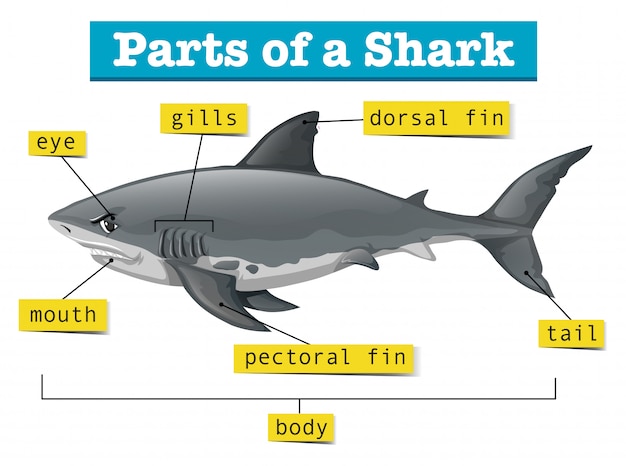

Sharks have been around for more than 450 million years, making them older than dinosaurs.
Some species of sharks can live up to 70 years.
Sharks have an incredible sense of smell, with some species able to detect blood in water from up to a mile away.
Sharks have rows of replaceable teeth that continuously grow throughout their lifetime.
The whale shark is the largest fish in the world, reaching lengths of up to 40 feet.
Despite their reputation, not all sharks are dangerous to humans. In fact, most shark species are harmless.
The great white shark is known for its ability to leap out of the water, a behavior known as breaching.
Sharks have a unique electroreception system that allows them to detect the electrical signals emitted by other animals.
The fastest shark species, the shortfin mako, can swim at speeds of up to 45 miles per hour.
Sharks play a crucial role in maintaining the health of marine ecosystems by controlling the populations of other marine species.
Some species of sharks can go into a state of motionless sleep, known as tonic immobility.
Sharks have the ability to regulate their body temperature, allowing them to inhabit both warm and cold waters.
Many shark species, including the great white, have multiple rows of teeth, with new teeth constantly growing to replace old ones.
Sharks have an incredible ability to heal. They can recover from severe injuries and even regenerate lost teeth.
Sharks have an exceptional immune system and are rarely affected by diseases.
The skin of sharks is covered in tiny tooth-like scales called dermal denticles, which help reduce friction and improve swimming efficiency.
Some shark species, such as the hammerhead, have unique head shapes that enhance their ability to detect prey.
The goblin shark is known for its unique protruding jaws, which can extend to catch prey.
Sharks have an excellent memory and can remember certain locations and even recognize individual humans.
Some sharks, like the bull shark, have the ability to survive in both saltwater and freshwater environments.
The largest concentration of whale sharks can be found in the waters around Mexico, specifically in the Yucatan Peninsula.
Greenland sharks are known to live for extremely long periods, with some individuals estimated to be over 400 years old.
Sharks are susceptible to overfishing, with millions being killed each year for their fins, meat, and other body parts.
The sixth sense of sharks is their ability to sense electromagnetic fields, allowing them to locate prey hidden in the sand.
The nurse shark is one of the few species that can breathe while stationary at the bottom of the ocean.
The smallest shark species, the dwarf lanternshark, grows to only around six inches in length.
Sharks have a remarkable hunting technique called spy hopping, where they lift their heads out of the water to survey the surroundings.
Megalodon, an extinct species of shark, was the largest predator to have ever lived, with teeth measuring over seven inches long.
Sharks have a highly developed sense of hearing, which allows them to detect even the slightest sounds in the water.
Some shark species, like the lemon shark, have a unique ability to reproduce asexually without the need for a mate.
Sharks have been known to cooperate in hunting, with individuals coordinating their movements to surround and catch prey.
Many shark species, including the tiger shark, have unique patterns on their skin that function as camouflage.
Certain shark species, such as the hammerhead, have an elongated head shape that improves their depth perception.
Sharks have a slow reproductive rate, with females usually giving birth to only a few pups every couple of years.
Some shark species, like the bull shark, are known for their ability to tolerate low-oxygen environments.
Sharks have a strong sense of hearing, allowing them to detect sounds from miles away, including the low-frequency sounds generated by injured prey.
Some shark species, like the zebra shark, can change their skin color over time, allowing them to blend in with their surroundings.
Sharks have been observed exhibiting social behavior, such as forming schools or congregating in specific areas.
The eyes of sharks have a unique adaptation called the tapetum lucidum, which enhances their vision in low-light conditions.
Sharks can detect even the faintest movement in the water, making them highly skilled hunters.
Sharks have a keen sense of touch, with specialized cells called ampullae of Lorenzini located on their snouts, allowing them to detect electric fields.
Some shark species, like the carpet shark, have a unique ability to change the shape of their bodies to squeeze into tight spaces.
Sharks have an incredible swimming efficiency, with some species able to travel hundreds of miles in a day.
The largest gathering of sharks in the world occurs annually off the coast of South Africa, during the sardine run.
The conservation of sharks is crucial for the health of our oceans and the balance of marine ecosystems.
Around the world, coffee enthusiasts enjoy Monin coffee concentrate since it is a multipurpose product. Conveniently combining…
The Importance of Choosing the Right Shower for Your Bathroom Renovating your bathroom can be…
Usain Bolt holds the record for the fastest 100-meter sprint in history.Bolt was named Sportsman…
Love is in the air... and it smells suspiciously like chocolate!Roses are red, violets are…
Life's a beach, take a picture and relax.Sun, sand, and salty kisses. That's what beach…
Hungary is home to the largest thermal water cave system in the world.The Rubik's Cube…